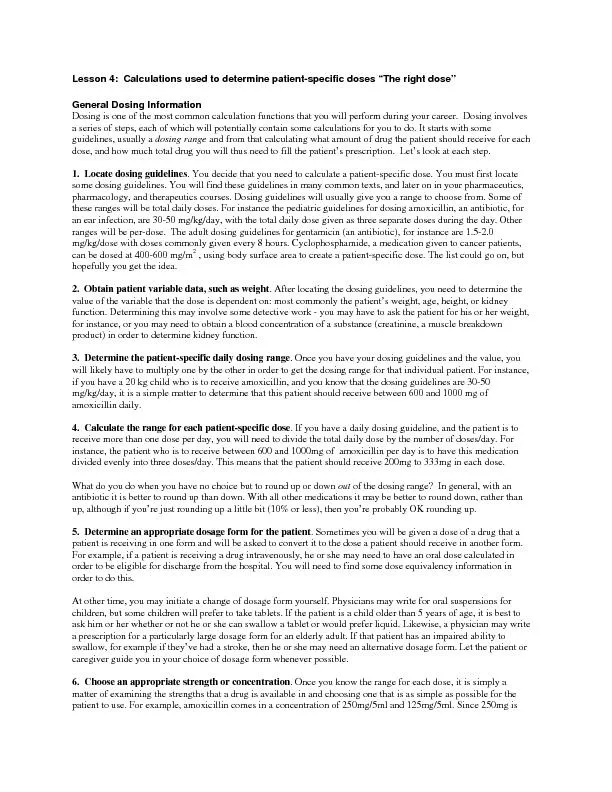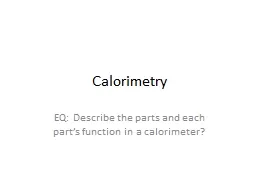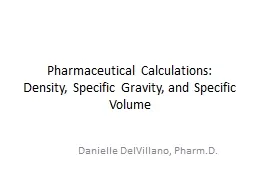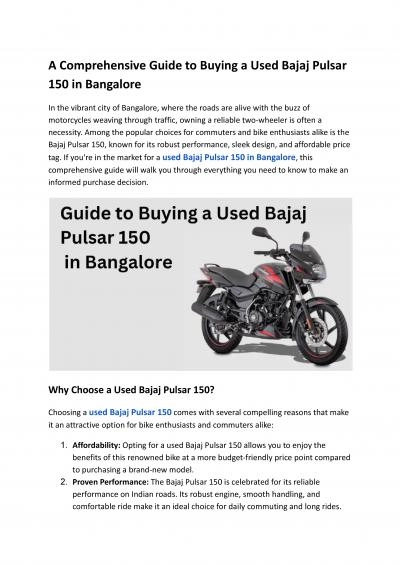PDF-Lesson 4: Calculations used to determine patient-specific doses
Author : liane-varnes | Published Date : 2016-03-17
2between 200mg and 333mg it would be easiest to have the parents administer 5ml one teaspoonful three times aday to the childWhat do you do if you calculate a specific
Presentation Embed Code
Download Presentation
Download Presentation The PPT/PDF document "Lesson 4: Calculations used to determin..." is the property of its rightful owner. Permission is granted to download and print the materials on this website for personal, non-commercial use only, and to display it on your personal computer provided you do not modify the materials and that you retain all copyright notices contained in the materials. By downloading content from our website, you accept the terms of this agreement.
Lesson 4: Calculations used to determine patient-specific doses : Transcript
Download Rules Of Document
"Lesson 4: Calculations used to determine patient-specific doses "The content belongs to its owner. You may download and print it for personal use, without modification, and keep all copyright notices. By downloading, you agree to these terms.
Related Documents














